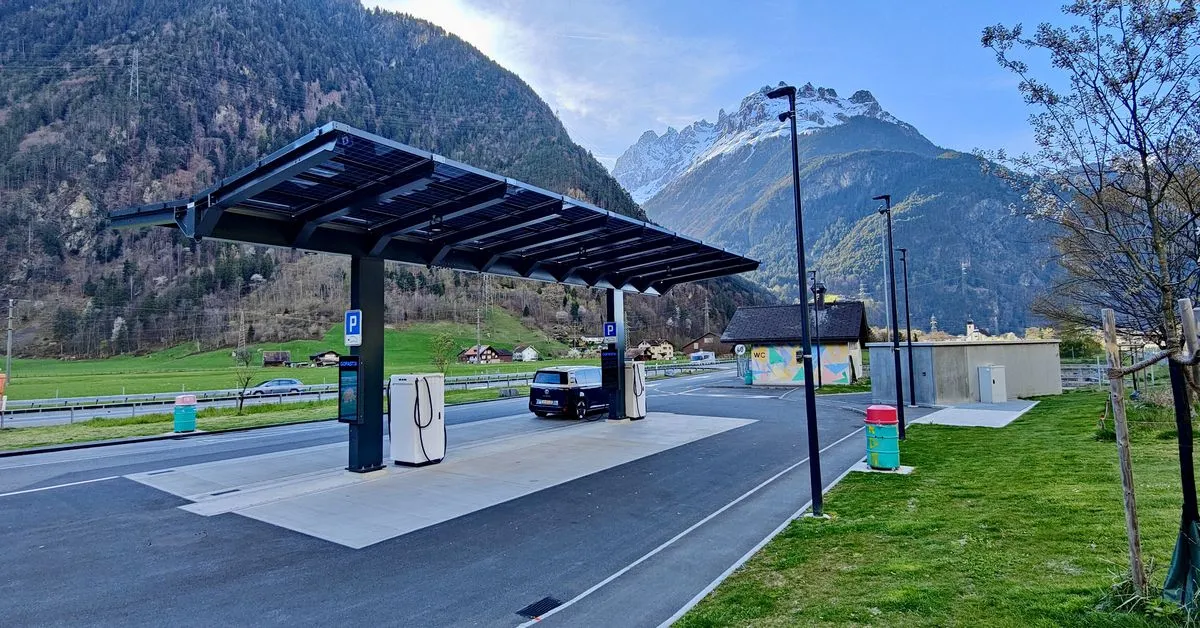- cross-posted to:
- futurism@lemmy.ca
- technology@lemmy.world
- europe@feddit.de
- cross-posted to:
- futurism@lemmy.ca
- technology@lemmy.world
- europe@feddit.de
EU passes law to blanket highways with fast EV chargers by 2025::The chargers must be placed every 60km (37mi) and allow ad-hoc payment by card or contactless device without subscriptions.



People worry about range too much. Over 95% of trips are under 50 miles and less 1% are over 100 miles in the US. I imagine Europeans cover even less distance on average. Every new EV out there will be able to cover 99% of trips. Most newer EVs have at least a 250 mile range which you should probably stop and take a break in that time period anyway.
In the US, our problem is number of home chargers is horrible. A level 1 charger will get you 35-40 mile range each day. That would be perfectly fine for people in apartments and most people in general. Apartment buildings and condos largely do not even have that though. About 14% of people live in apartments and about 5% live in condos. That means a large chunk of the population does not have easy access to charging. A little over a third of Americans rent (houses and apartments). There is not much incentive for am owner to install a level 1 charger let alone install a 240v outlet. That means those people will currently have to give DC fast charging stations. Those are much more expensive, take a long time, and because Electrify America was only done to satisfy VW’s legal requirement, many are purely maintained and broken.
That situation is even worse in Europe because there is a higher percentage of people living in flats at about 46%.
With the 99% number If you drive every day that’s still 3-4 trips a year when your car will be unable to get you to where you want to go. And with electric cars still being very expensive that is not a good look when a much cheaper ICE vehicle has essentially no such limitation.
It doesn’t help that I have zero trust in the charging infrastructure in Europe at the moment, so completing this proposal is actually what would make electric cars fully viable in my eyes.
Obviously they are already great if you have 2 vehicles in a household where one can complete the longer trips with ease. You really get to enjoy the many upsides during your daily commute where range isn’t really a factor.
You won’t be unable to go, you’ll just have a stopover after 300 miles. You know, like you normally would, anyways.
99% are under 100 miles (161km) . Most EVs have a range of at least 250 miles (~400km). Even if you are going more than that, you are not stuck on the side of the road. You just have to find your way to a DC fast charge station and hang out for a half our while your car charges. ICE vehicles also have a range limitation. As for cost, yes, EVs are pricier but are cheaper to operate (electricity is cheaper than gas and maintenance is much cheaper) and are cost equivalent after 6-7 years compared to an ICE.
As for trust in the infrastructure in Europe, I can’t speak to that. It just got much better here in the US because most auto companies decided on Tesla’s plug as the standard so now all of those are open to most cars. Before that, you were likely using an Electrify America station. VW was required to build those for chatting emissions tests and they have invested very little in maintenance.
The EU is likely better, to be honest. From what I can find, there are over twice the amount of fast charge stations in the EU compared to the US.
https://www.iea.org/reports/global-ev-outlook-2022/trends-in-charging-infrastructure
You make it sound like DC fast chargers are everywhere, when they most certainly are not.
In the EU which has twice the number that the US does? You can certainly find one within 400 km. In the US it is certainly more difficult if you are off the beaten path but if you are going down pretty much any interstate, you will find one. On my way to my parents house 225 miles away in BFE Washington, for instance, there are four cities spread out along the way that have multiple DC fast charge stations. None of those cities is over 30k people and only one of them is on an interstate.
Imagine a world where people don’t just live in the US of EU. What about other countries? Rural vs Urban? Of course large cities aren’t the issue, it’s what do you do when you don’t live near charging stations? Driving in town isn’t an issue. It’s driving anywhere else that’s the issue.
This article is about the EU…
As for rural vs urban, the charging locations I mentioned were in rural areas. One of the towns has a whopping 1500 people. The other towns are not much bigger.
As for where you live, you can check out PlugShare to see how many fast chargers are near you. It really is not much of an issue in developed countries outside of maybe trying to go from eastern Australia to Perth but no sane person does that drive. The other places I could see being an issue would be Yukon, Nanavut, and Northwest Territories in Canada.